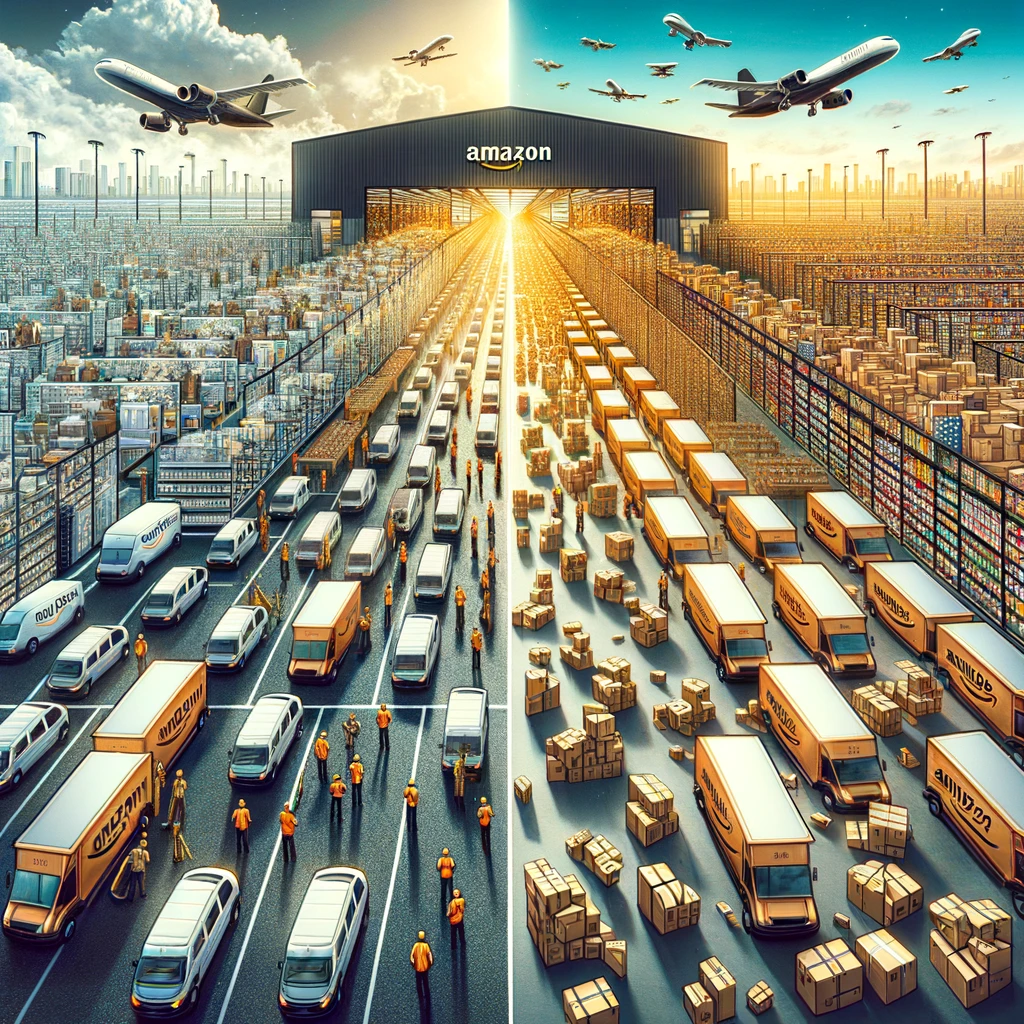In our era of fast-paced online shopping, Amazon has revolutionized the way we receive products by introducing incredible delivery options like Amazon Prime.
Behind the scenes, their infrastructure plays a vital role in ensuring efficient and timely deliveries.
Two key components of Amazon’s delivery network are the delivery Ssation and the fulfillment center. But what is better – Amazon delivery station vs fulfillment center? What sets them apart, and which one is the backbone of Amazon’s success?
Let’s dive into the world of Amazon logistics and compare these two facilities that keep the wheels of e-commerce turning smoothly.
- Understanding the Differences
- Infrastructure and Operations
- Workforce and Technological Advancements
- Benefits and Limitations
- Conclusion
Table of Contents
ToggleUnderstanding the Differences
Exploring the Fulfillment Center:
At the heart of Amazon’s logistics operations lies the fulfillment center. These centers serve as central hubs where products are stored, organized, and shipped to customers. Businesses looking for efficient fulfillment solutions can explore Amazon fulfillment services for eCommerce businesses to streamline their operations.
Fulfillment centers play a pivotal role in inventory management and order fulfillment, ensuring a seamless flow of goods.
Decoding the Delivery Station:
While fulfillment centers are responsible for managing inventory on a larger scale, delivery stations focus on the last-mile delivery process, connecting products to customers in a particular region.
Unlike fulfillment centers, delivery stations are localized facilities that help expedite the delivery process.
Infrastructure and Operations
Fulfillment Center:
Due to the scale and complexity of Amazon’s operations, fulfillment centers are vast facilities with a range of warehousing and sorting operations. They handle inventory at a massive scale, including receiving, picking, packing, and shipping. Companies utilizing pick and pack fulfillment services can optimize these processes to enhance order accuracy and speed.
These centers are equipped with advanced technologies and automation systems that facilitate efficient processing.
Fulfillment centers handle everything on a massive scale such as:
- receiving inventory
- picking,
- packing, and shipping,
Delivery Station:
In contrast to fulfillment centers, delivery stations are smaller, local distribution centers strategically positioned to ensure prompt last-mile delivery.
Here, orders are sorted and prepared for delivery to customers in the immediate area.
Delivery stations play a crucial role in providing regional coverage and reducing the distance between the products and the customers.
Workforce and Technological Advancements
Fulfillment Center:
With their expansive operations, fulfillment centers require a substantial workforce for various tasks, including receiving, stocking, and shipping.
Amazon has implemented robotics and automation to enhance efficiency in handling inventory. Businesses looking to streamline operations should explore how can real-time inventory improve supply chain efficiency to ensure seamless stock management.
Advanced inventory tracking systems help streamline processes and ensure accurate inventory management, reducing errors and delays.
Delivery Station:
Delivery stations provide employment opportunities at a local level, fostering a stronger sense of community. These stations rely on innovative last-mile delivery technologies and real-time tracking systems to provide customers with accurate delivery updates.
By leveraging these advancements, Amazon strives to deliver exceptional customer experiences.
Benefits and Limitations
Fulfillment Center:
Fulfillment centers bring several advantages, such as vast storage capacity and efficient inventory handling. However, businesses expanding internationally should consider how to choose a fulfillment partner for global expansion to optimize their global logistics.
However, due to their centralized operations, fulfillment centers may face challenges in time-sensitive orders, especially when the delivery destination is far from the center. Fulfillment centers have a nationwide reach, but localized coverage might be limited.
Delivery Station:
Delivery Stations excel in connecting products to customers swiftly and efficiently, thanks to their localized proximity.
They play a vital role in the last-mile delivery process, which is crucial for ensuring customer satisfaction.
However, delivery stations may face space limitations, impacting the amount of inventory they can hold. Additionally, last-mile delivery can present challenges, especially in densely populated areas or during peak demand periods.
To overcome these challenges, Amazon continues to invest in innovative technologies and logistical solutions.
Conclusion
Amazon’s success in the e-commerce industry lies not only in the convenience of online shopping but also in the efficient logistics infrastructure that supports it. Fulfillment centers and delivery stations are two integral components of this infrastructure, each with its own unique purpose and contributions.
By understanding the differences and strengths of these facilities, we gain insight into the complexities of Amazon’s logistics network. Both fulfillment centers and delivery stations work in harmony to connect products to customers in a seamless and timely manner.
For businesses looking to streamline their own fulfillment processes, contact us to learn how our tailored logistics solutions can enhance efficiency and scalability.
The blend of centralized operations and localized distribution ensures that Amazon can meet the diverse needs of its customers effectively.






